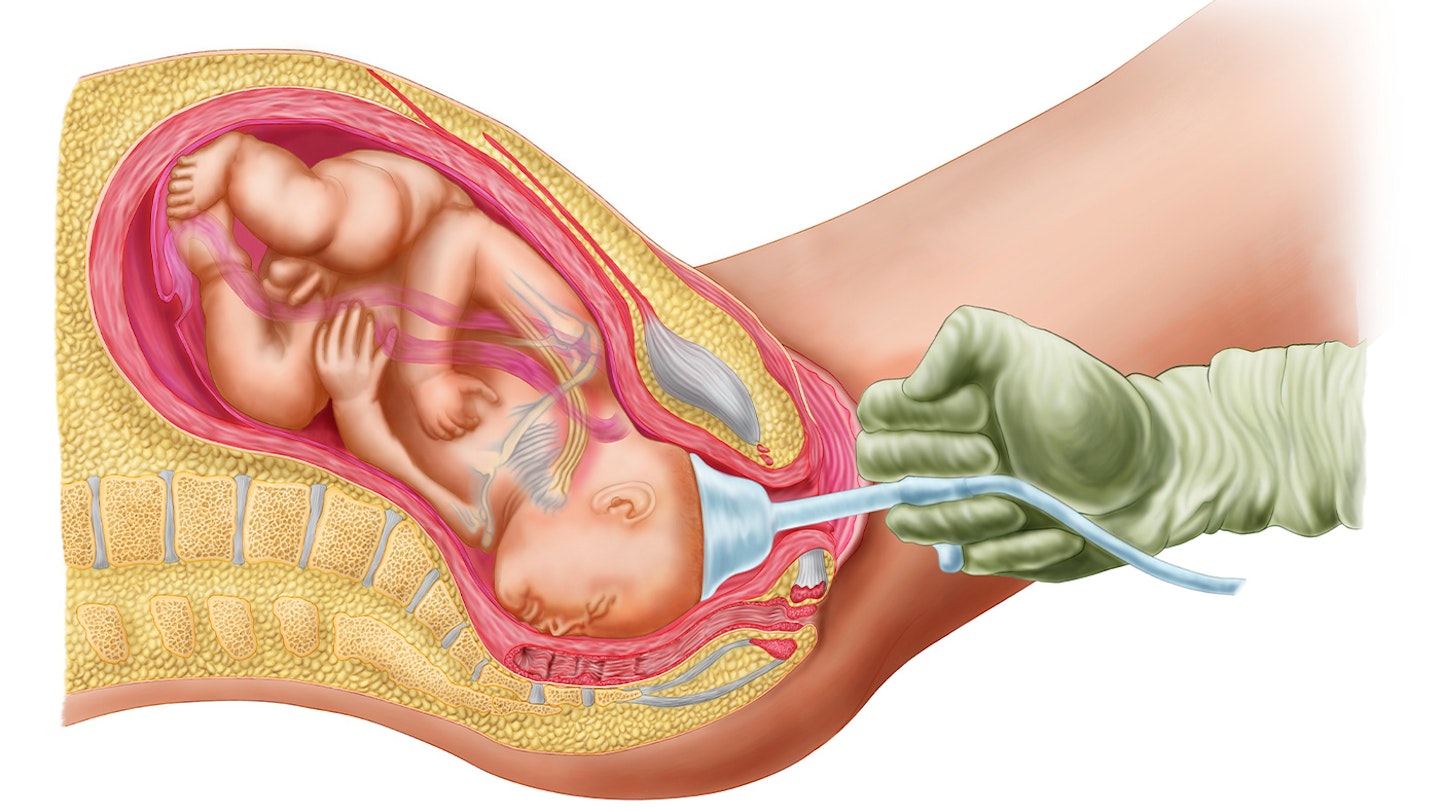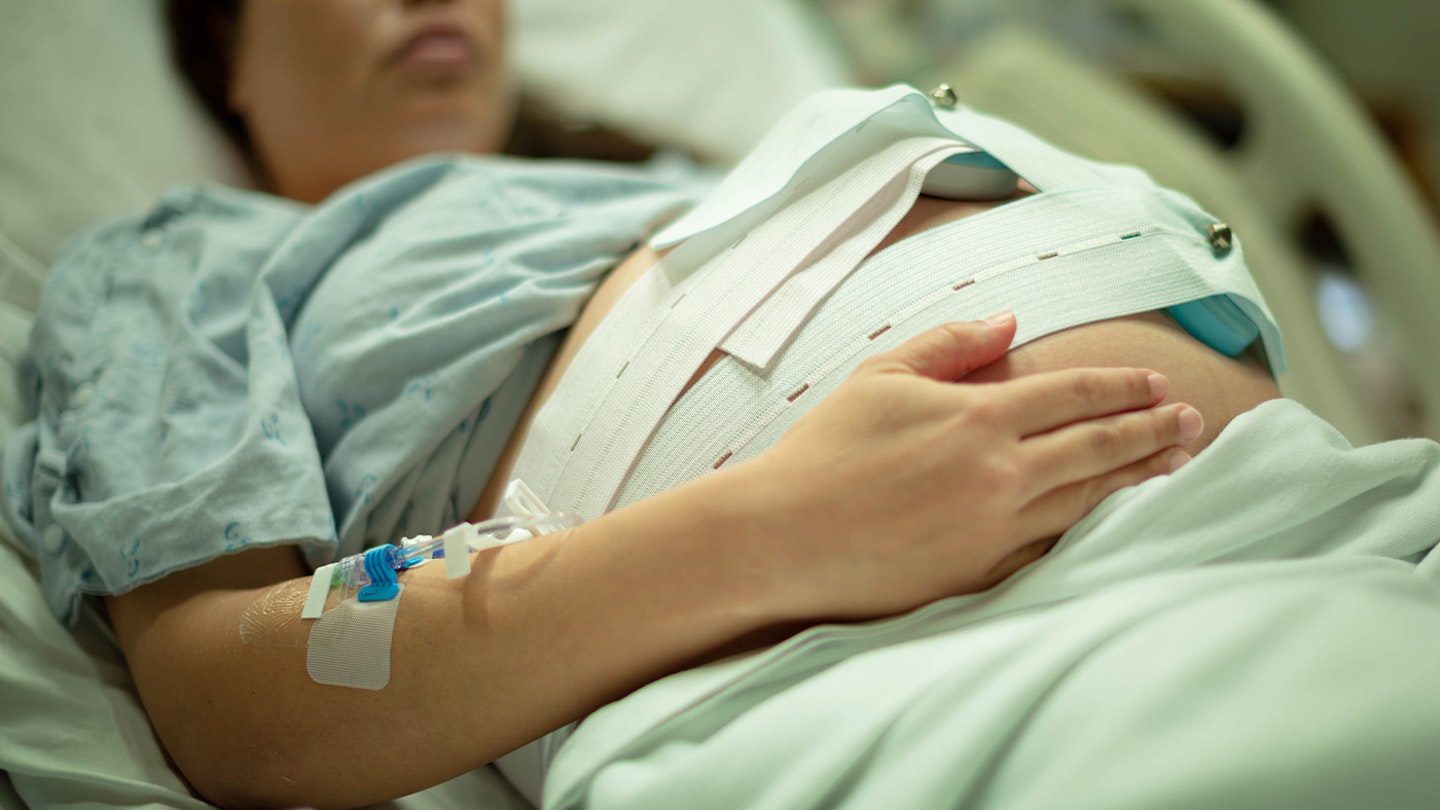Giving birth isn't always plain sailing, and things might not always happen as you predict in your birth plan. Sometimes, if having a vaginal birth, baby needs a bit of extra help to come out. Although it's rare, one cause of this can be shoulder dystocia.
What is shoulder dystocia?
Shoulder dystocia can happen when baby's head has been born but when one of the shoulders becomes stuck behind the mum's pubic bone, delaying the birth.
If this happens, it usually means extra help will be needed in order to get baby out. This might involve the use of forceps or ventouse during labour.

According to the Royal College of Obstetricians and Gynaecologists, one in 150 (that's 0.7 per cent) vaginal births result in shoulder dystocia. In most cases, despite the complications, most babies will be born safely.
What causes shoulder dystocia?
Most of the time, shoulder dystocia happens unexpectedly and it cannot be predicted. However, there are some factors that make it more likely to occur.
• If you've had shoulder dystocia before
• Have a long labour
• Have diabetes or gestational diabetes
• Have a BMI of 30 or more
• Are induced into labour
Although there's usually no problem delivering larger babies (over 10lb), shoulder dystocia is more common in larger babies.
Unlike most complications, an ultrasound scan is unlikely to pick up how likely you are to experience shoulder dystocia.
Can it be prevented?
In most cases, as it's unpredictable, it can't be prevented. If you're at a higher risk of shoulder dystocia, for example if you have diabetes, you may be offered induction or a c-section delivery.
What happens if shoulder dystocia occurs?
As it's a risk in all vaginal births, your midwife and doctor will be aware of it. If it does happen, it will be treated as an emergency. The shoulder needs to be released urgently to allow baby to start breathing air into their lungs.
As it's an emergency, your midwife will alert other members of staff and it's likely that obstetricians, midwives and a doctor will enter the room to help aid the delivery.
Seeing all these people enter the room can be very distressing for mum and the birth partner(s), and it may feel frightening. It's important to remember however that these people are here to ensure a safe and prompt birth, so try your best to stay calm and follow their instructions.
They may ask you to stop pushing, change your birthing position, press on your abdomen or in some cases, give you an episiotomy. Once these steps have been followed, most babies will be born safely. If not, the obstetrician or midwife may place their hand inside the vagina to help release baby. They may ask you to move onto all fours as this can help baby come out too.
What will happen after baby is born?
Once baby has been born, the doctors will check your baby is okay. Not only is the ordeal quite traumatic for baby, but it's traumatic for you too. You may be asked if you want to talk about your experience with a professional to help you mentally process your birth experience.
If you're struggling mentally with your experience, there are many charities and support services available to help you following birth.
For mums giving birth at home, in a water bath or in a midwife led birthing unit
If it occurs when not giving birth in a hospital, your midwife will still be trained to deal with shoulder dystocia. If the usual measures to birth aren't working, they may call an ambulance to take you and baby to hospital.
What are the risks of shoulder dystocia?
For mum:
• Vaginaltears which may require stitching
• Heavier bleeding after birth
For baby:
• Brachial plexus injury - this may cause loss of movement to the arm
• Injuries to the arm and shoulder
• Brain damage
